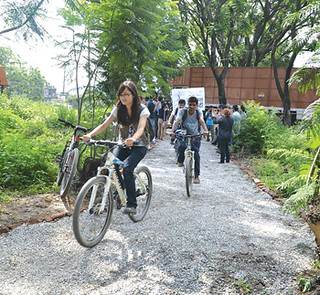Why is Kathmandu pursuing a policy of road widening instead of learning from best practice in urban renewal and avoiding mistakes made in other urban areas? The world has learnt the hard way that road widening is not the answer to relieving traffic congestion: on the contrary. The answer is better public transport, walking, and biking paths. Excerpt from Road Expansion, Urban Growth, and Induced Travel (Journal of the American Planning Association, Vol 69, No 2, Spring 2003):
Traffic is thought to behave more like a gas than a liquid: it expands to fill available space. Improved roads simply spur additional travel or divert trips from parallel routes, quickly returning a facility to its original congested condition. This is called ‘induced demand’. You can’t pave your way out of traffic congestion: ‘build it and they will come’.
The preponderance of empirical evidence to date suggests that the effects of induced demand are substantial. A widely cited study based on 18 years of data from 14 California metropolitan areas, found that every ten per cent increase in lane miles was associated with a nine per cent increase in vehicle miles travelled four years after road expansion, controlling for other factors.
Another study of 70 US metropolitan areas over a 15-year time period concluded that areas investing heavily in road capacity fared no better in easing traffic congestion than areas that did not. Using a meta-analysis of more than 100 road expansion projects in the United Kingdom, it was found that proportional savings in travel time were matched by proportional increases in traffic on almost a one-to-one basis, a finding that prompted the UK government to jettison its longstanding ‘predict and provide’ policy of responding to traffic-growth forecasts by building more motorways.

DIRECTION KATHMANDU
Foot power
It’s important to note that walking and biking, which are cheap and have essentially no carbon footprint, should be given top priority prioritised highest of all in our ways of getting around. That doesn’t necessarily mean building sidewalks everywhere, but it does mean that planners should always be thinking with their feet. How will this new development face the street?
Will the design reinforce our human curiosity and make it an interesting place to walk or bike past, or will it silently push people away with blank walls? Do our streets have safe ways for people to get across? The current generation has to work on flipping our transportation system upside-down…
Mike Hicks, streets.mn
Read also:
Streets on the crossroads